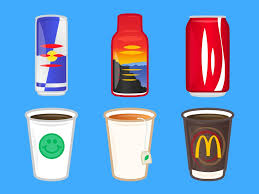1,3,7-trimethylxanthine, a natural purine alkaloid.
An adenosine receptor antagonist, that accounts for its stimulant action.
There is a higher genetic predisposition to higher caffeine levels that is linked to reduce body fat and type 2 diabetes risk.
It spreads throughout the body and crosses the blood-brain barrier.
A stimulant that can influence neuronal control pathways in the central and peripheral nervous systems.
A bio-active ingredient found in commonly consumed beverages such as coffee, tea, and sodas.
Short-term physiological effects of caffeine include increased blood pressure and sympathetic nerve outflow.
In excessive doses it can be harmful.
Caffeine can also be synthesized pharmacologically and added to foods or non-alcoholic or energy drinks or commercial preparations to reduce fatigue and increase psychic reactivity.
The main sources of caffeine consumption include coffee, tea, and soft drinks.
Some studies show that caffeine intake is linked to weight loss and reduced body mass index (BMI) and fat mass.
Caffeine intake may thus lower the risk of conditions linked to overweight or obesity, such as type 2 diabetes or cardiovascular disease.
Caffeine intake can contribute to pain relief when added to analgesic agents.
Habitual consumption of caffeine may inhibit physiological short-term effects.
Caffeine is known to shortly increase blood pressure, whereas long term consumption could decrease blood pressure.
Consumption of caffeine increases parasympathetic activity in habitual caffeine consumers.
Capable of increasing work capacity while individuals perform strenuous tasks, likely due to caffeine’s ability to increase sympathetic nerve outflow.
Has tendency to inhibit parasympathetic activity in non-habitual consumers.
The parasympathetic activity increases in the supine position.
Caffeine may influence autonomic activity differently for individuals who are more active or elderly.
Probably most frequently consumed drug in the world.
Most frequently ingested psychoactive substance.
Approximately 80% of caffeine consumed is in the form of coffee.
Common beverages coffee, tea, soft drinks, cocoa, chocolate containing foods, pain medications, and stimulants are important sources.
For typical servings caffeine content is highest in coffee, energy drinks, and caffeine tablets, intermediate in tea, and lowest in soft drinks.
Energy drinks contain between 70 and 200 mg of caffeine per 16 ounce serving.
An 8 ounce cup of coffee contains 110-150 mg for drip, 65-125 mg for percolated, and 40-80 mg for instant coffee.
Soft drinks contain 10-16 mg per 100 gm, coffee 35-75 mg per 100 gm and black tea contains about 22 mg per 100 gm.
Caffeinated beverages contain 50-100 mg of caffeine.
An ergogenic compound that raises heart rate and blood pressure.
Has short term cardiovascular effects, including increased plasma renin levels, peripheral vasoconstriction, increased blood pressure, and cardiac
arrhythmias.
A bio-active ingredient found in commonly consumed beverages such as coffee, tea, and sodas.
Short-term physiological effects of caffeine include increased blood pressure and sympathetic nerve outflow.
Habitual consumption of caffeine may inhibit physiological short-term effects.
Consumption of caffeine increases parasympathetic activity in habitual caffeine consumers.
Capable of increasing work capacity while individuals perform strenuous tasks, likely due to caffeine’s ability to increase sympathetic nerve outflow.
Has tendency to inhibit parasympathetic activity in non-habitual consumers.
The effects on parasympathetic activity may vary depending on the position of the individual when autonomic responses are measured.
The seated position inhibits autonomic activity after caffeine consumption, explaining why some caffeine consumers do not experience short-term effects of caffeine if their routine requires many hours in a seated position.
Binds to the adenosine class of G protein coupled receptors on the heart muscle surface, which begins a second messenger system in the cyclic adenosine monophosphate system inside the cells and mimics epinephrine (Piirainen H at al).
Increases the rate of glycolysis, which increases ATP available for muscle contraction and relaxation and can cause positive Inotropy and chronotropy, with an associated stronger and faster heartbeat.
Exposure increases blood pressure and prayerful vascular resistance immediately, in part because of sympathetic stimulation.
A variant in the gene encoding CYP1A2 is associated with higher plasma caffeine levels and a lower ratio paraxanthine to caffeine and a lower caffeine intake
May increase arterial stiffness.
May increase urine output.
No association between caffeine consumption and breast cancer risk (Ishitani).
Coffee intake is associated with a lower incidence of diabetes and favorable effects on the endothelial function.
Consumption associated with better mood in women (Kawachi I).
Inverse association between coffee drinking and depression and suicide.
Adverse effects manifest with ingestion with doses higher than 200 mg of caffeine and is associated with insomnia, nervousness, headache, tachycardia, arrhythmias, and nausea.
Meta-analyses show the consumption of caffeine does not demonstrate association with ventricular premature contractions or ventricular arrhythmias.
In a random clinical trial short term affects of high does caffeine in patients with heart failure at increased risk for arrhythmic events showed no significant effect on the frequency of ventricular or superventricular ectopies even doing physical stress or a treadmill test (Zuchinali P et al).
The above study challenges the perception that caffeine intake should be limited in patients with heart disease at risk for arrhythmia.
It is an effective ergogenic aid for endurance in athletes.
It is on the list of banned substances by the International Olympic Committee.
Oral absorption is rapid waves peak plasma concentrations after 29.8 minutes.
Mobilizes fat stores and stimulates muscles to use fat delaying depletion of muscle glycogen and allows for prolonged exercise (Laurent D et al).
Has essentially complete bioavailability with oral intake and a plasma half-life varying from 2.7-9.9 hours ( Blanchard J).
In a longitudinal study of 50,739 US women with a mean age of 63 years free of depression and followed, the depression risk decreased with increasing caffeinated coffee consumption (Lucas M et al).

 See ((Coffee))
See ((Coffee))